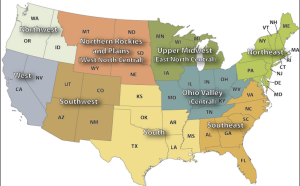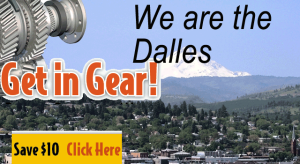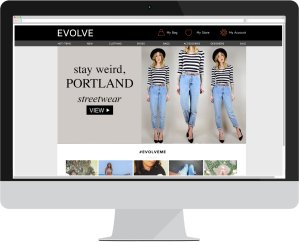Building Local Credibility Through Dynamic Content
92% of Americans prefer to buy from local small businesses than from national chains. They like to deal with people like themselves, because locals are more likely to share their priorities and values.
If you serve multiple markets, then it makes sense to promote your local credentials. You’re more likely to be trusted, and at the same time you’re creating a competitive differentiator compared to other brands who haven’t localized their message.
You may well have already done this exercise as part of your bigger local brand strategy, now it’s time to make sure your website is pulling its weight with dynamic content powered by precise geo-location data.
Segmenting your market
The first step is to segment your market and understand the priorities of each submarket.
Define your similar markets and your highest value markets
 You don’t need to personalize for every last town and city to get the benefit of localization. Split your market up into five or six submarkets based on the commonalities of each set of customers.
You don’t need to personalize for every last town and city to get the benefit of localization. Split your market up into five or six submarkets based on the commonalities of each set of customers.
Remember, your markets don’t need to be geographically contiguous (think city vs. rural or climate zones with warm-weather vs. rainy vs. harsh winter).
- Do one or two territories stand out as high value? Give them special treatment with a personalized homepage for that city.
- Do you serve pockets of non-English speaking communities? Show them you understand their needs with some local language on the homepage.
Define which components of your brand appeal to different markets
Different markets have different needs & priorities. This can be inventory based, or other values like price, customer service or understanding of the local market.
- Are you known for some products in one market, but different products in others?
- Is price more of a driving factor in some places than others? Where?
Map out which of your submarkets like which of your products, or which submarket is driven by what brand value.
Define some easy identifiers for each submarket
Some are easy like static imagery where Northwest identifies with mountains and trees versus SoCal and Florida who like to see beaches. Others can be more subtle, like ethnic or demographic makeup, climate and popular activities. They key is that each local submarket should be able to identify themselves in your brand.
Catalog your local community investments
Do you sponsor a sports team or an event or a charity? Map out which markets would care about which investments.
Make it look local
Once you’ve segmented your market and you’ve identified the brand values that each submarket prioritizes, you can create some image swaps to bring your brand in closer alignment with your customers’ values.
Location & demographic brand imagery
 If you have city or location shots on your homepage, select one that looks like the region and geofence the whole region. If you operate at a national level, you probably don’t need to have a Portland location for Portland and a Seattle location for Seattle, as we’re all the Northwest and we have similar values. If you’re strictly within a regional market, then it might make sense to differentiate between the subregional variations within your market.
If you have city or location shots on your homepage, select one that looks like the region and geofence the whole region. If you operate at a national level, you probably don’t need to have a Portland location for Portland and a Seattle location for Seattle, as we’re all the Northwest and we have similar values. If you’re strictly within a regional market, then it might make sense to differentiate between the subregional variations within your market.
By referencing local scenery and people, you’re implicitly identifying yourself as a local in every region you serve and that’s going to improve engagement and trust.
Product placement
 If some of your products do better in some locations than others, highlight those products on the homepage with a link to that product’s page somewhere deeper on your site.
If some of your products do better in some locations than others, highlight those products on the homepage with a link to that product’s page somewhere deeper on your site.
By showing the products you know they’re interested in and reducing the number of clicks to find what they want, you’ll see a lower bounce rate and a higher conversion rate.
Local quotes
People like to hear what their neighbors think. Create an endorsement section on your homepage and geo-fence it so each region sees a customer quote from someone within their region.
By referencing local people, you’ll build trust and credibility in each market.
A well crafted localization campaign is subtle yet powerful. Looking local builds trust and gives your company a differentiator and competitive edge over other companies vying for the same customers.
With a geo-fencing technology like CloudEngage, it’s easy to localize content in seconds so your site always looks local.
For help with any of these, please send a note to [email protected] and we’ll help with your next campaign.
Related Articles
CBT News: Dealership geo-fence marketing
Location, location, location! It is usually the difference between a shopper looking for an off road capable 4×4 or a city dweller in need of an eco-friendly Nissan Leaf.
CloudEngage Acquires AnswerDash, Leader in AI powered Self-Service Support
We’re thrilled to announce that we’ve acquired Seattle-based AnswerDash, expanding our suite of offerings to Include AI powered self-service support SPOKANE, Wash., AND SEATTLE, Wash., June 23rd, 2020. Our entire team recognized the fit with AnswerDash was terrific....
CloudEngage Acquires AnswerDash, Leader in AI powered Self-Service Support
We’re thrilled to announce that we’ve acquired Seattle-based AnswerDash, expanding our suite of offerings to Include AI powered self-service support SPOKANE, Wash., AND SEATTLE, Wash., June 23rd, 2020. Our entire team recognized the fit with AnswerDash was terrific....
Subscribe & Follow
Join Our Newsletter
Subscribe to our email list for news and offers. Follow us on social media.
